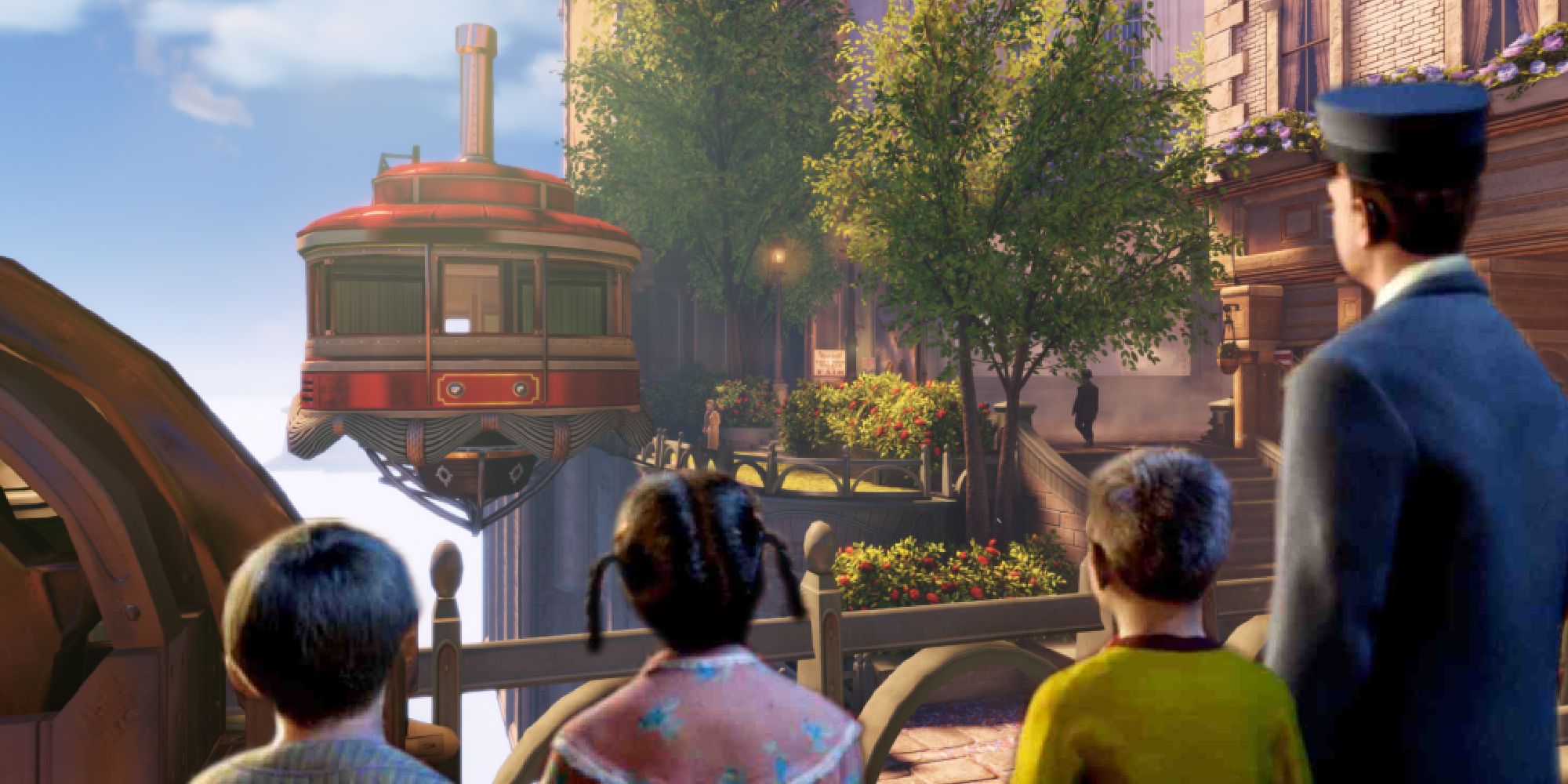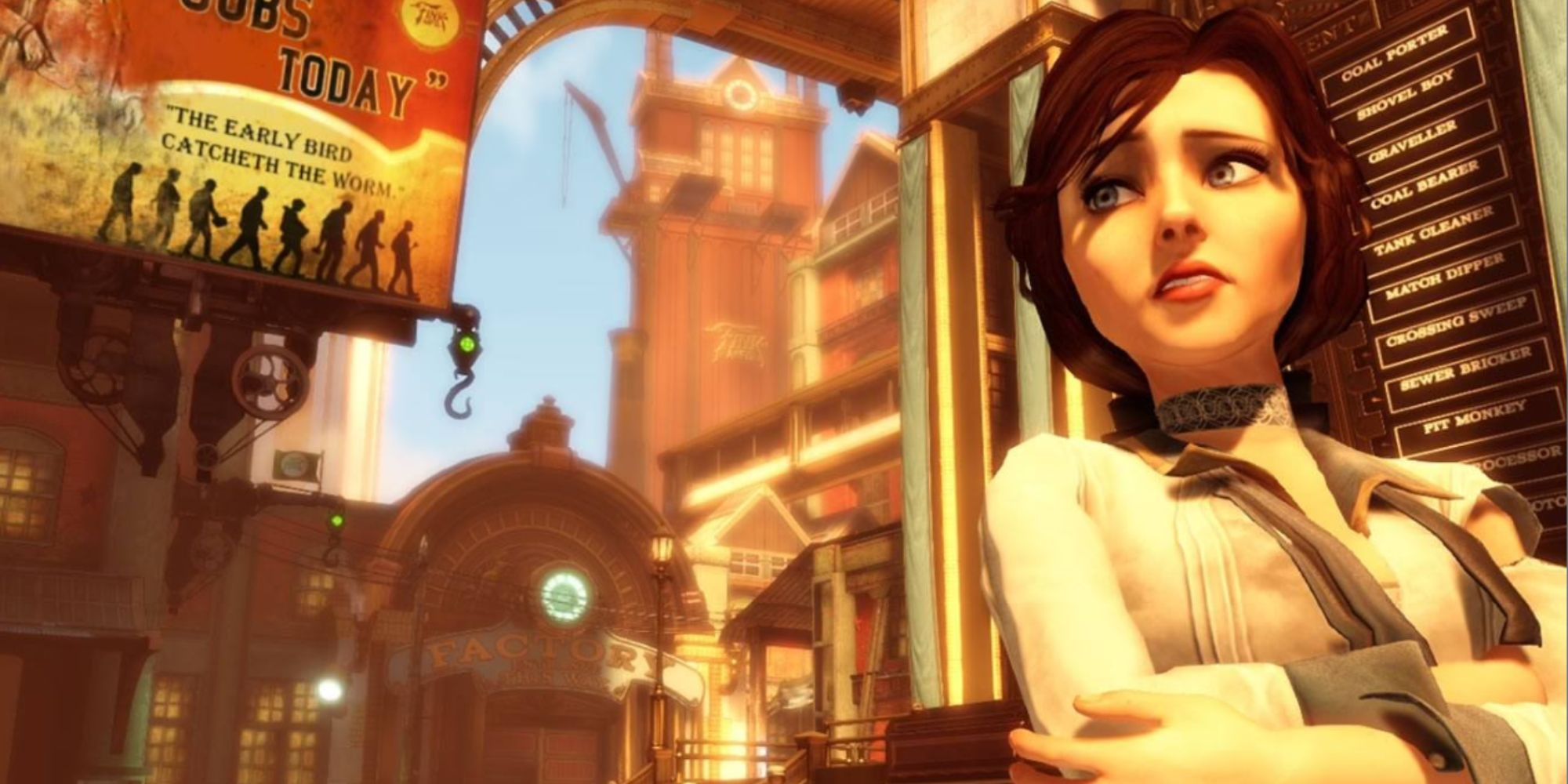The BioShock games have always taken players on journeys to fantastical retrofuturist cities governed by larger-than-life leaders. In the first game, it was Rapture, and the hero you did battle with was the underwater dystopia’s Randian business tycoon leader, Andrew Ryan. Though 2 took players to Rapture yet again, 2013’s BioShock Infinite sent us to Columbia, the floating city in the sky ruled by Benjamin Franklin-worshiping Christian nationalist, Zachary Comstock.
The Polar Express, the first of three motion capture animation films Robert Zemeckis made in the 2000s, takes viewers on a similar journey. But, this time, the city is the North Pole, and the charismatic leader is none other than Santa Claus himself.
Zemeckis’ film, based on the children’s book by Chris Van Allsburg, isn’t nearly as sinister as 2K’s immersive sim series. But, a similarity that I noticed while rewatching The Polar Express this year is that the movie introduces an unassuming character into a new world with characters who guide them along and communicate a strange set of rules. Tom Hanks’ Conductor, who introduces the children to the concept of the train and the Golden Tickets they’ll need punched to ride it to the North Pole, is there with the kids through all the obstacles. His role isn’t all that different from Atlas, the voice in your ear in BioShock who coaches you through Rapture. Plus, Hanks is later revealed to be Santa Claus, just as Atlas is eventually revealed to be Frank Fontaine, the true villain of the game.
In BioShock, the player enters the new world through a linear mode of transportation. In the first game, it’s a bathysphere descending into the depths of the ocean to reveal the Art Deco world of Rapture. In Infinite, it’s a flying machine that is only designed to soar straight up into the clouds of Columbia. The Polar Express similarly spends the first hour getting the characters to the North Pole via the titular magic train.
The process of getting there feels like a level-based video game, built around set-pieces that stretch the limits of things that could conceivably happen on a train. There’s the musical dance sequence where waiters appear to acrobatically serve hot chocolate to the kids. There’s a virtuoso long take that shows the young girl’s golden ticket sail off the train, then get taken by an eagle and rolled into a snowball, before returning to the train in an elaborate manner. Each of these sections has a singular idea that explored for a few minutes before moving on, and good games often follow the same pattern.
The Polar Express came out in 2004, the age of licensed trash, so there was a poorly received action-platformer released alongside it for GameCube, PS2, PC, and Game Boy Advance.
Once the children arrive at the North Pole, we see that it is a world that seems to exist outside of time. The entire film’s era is nebulous, but the North Pole especially seems to exist in a retrofuturist pocket dimension. Shining brass, cobblestone, and gleaming wood are all incorporated into the quaint architecture. The North Pole, like Rapture or Columbia, feels more like a theme park town than a real city where people live and work. It exists for Christmas, and it’s hard to imagine how it actually functions outside of the show that Santa and his elves put on for the year’s most magical night.
The Polar Express has moments of menace, like when the protagonist meets a creepy Ebenezer Scrooge puppet in a storage car on the train. But, by and large, it’s an innocent story about how it’s good to keep the holiday faith and believe in Santa long into adulthood. But, in its exciting journey to a city occupied by a legendary figure that seems to exist in a fantastical past, it follows a similar structure to the BioShock games. Now would you kindly leave out some milk and cookies for the big man?



Leave a Reply